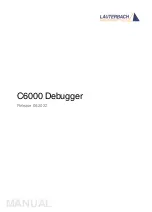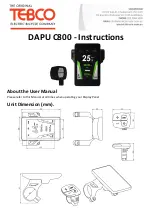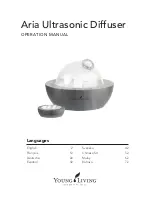
40
User's Guide Babyface Pro
© RME
21. Routing and Monitoring
21.1 Overview
The Babyface Pro includes a powerful digital real-time mixer, based on RME’s unique, sample-
rate independent
TotalMix
technology. It allows for practically unlimited mixing and routing op-
erations, with all inputs and playback channels simultaneously, to any hardware outputs. To-
talMix FX adds 3-band parametric equalizer, low cut, echo and reverb.
Here are some typical applications for TotalMix:
•
Setting up delay-free submixes (headphone mixes). The Babyface Pro allows for up to 6 fully
independent stereo submixes. On an analog mixing desk, this would equal 12 Aux sends.
•
Unlimited routing of inputs and outputs (free utilisation, patchbay functionality).
•
Distributing signals to several outputs simultaneously. TotalMix offers state-of-the-art splitter
and distributor functions.
•
Simultaneous playback of different programs via a single stereo output. The ASIO multi-
client driver supports the usage of several programs at the same time. If this happens on dif-
ferent playback channels TotalMix provides the means to mix and monitor these on a single
stereo output.
•
Mixing of the input signal to the playback signal (complete ASIO Direct Monitoring). RME is
not only
the
pioneer of ADM, but also offers the most complete implementation of the ADM
functions.
•
Integration of external devices. Use TotalMix to insert external effects devices, be it in the
playback or in the record path. Depending on the current application, the functionality equals
insert or effects send and effects return, for example as used during real-time monitoring
when adding some reverb to the vocals.
Every single input channel, playback channel and hardware output features a Peak and RMS
level meter, calculated in hardware. These level displays are very useful to determine the pres-
ence and routing destinations of the audio signals.
For a better understanding of the TotalMix mixer you should know the following:
•
As shown in the block diagram (next page), the record signal usually stays un-altered. To-
talMix does not reside within the record path, and does not change the record level or the
audio data to be recorded (exceptions:
EQ for Record
and
Loopback
mode).
•
The hardware input signal can be passed on as often as desired, even with different levels.
This is a big difference to conventional mixing desks, where the channel fader always con-
trols the level for all routing destinations simultaneously.
•
The level meters of input and playback channels are connected pre-fader, to be able to
visually monitor where a signal is currently present. The level meters of the hardware out-
puts are connected post-fader, thus displaying the actual output level.
Summary of Contents for Babyface Pro
Page 5: ...User s Guide Babyface Pro RME 5 User s Guide Babyface Pro General...
Page 11: ...User s Guide Babyface Pro RME 11 User s Guide Babyface Pro Installation and Operation Windows...
Page 28: ...28 User s Guide Babyface Pro RME...
Page 29: ...User s Guide Babyface Pro RME 29 User s Guide Babyface Pro Installation and Operation Mac OS X...
Page 38: ...38 User s Guide Babyface Pro RME...
Page 39: ...User s Guide Babyface Pro RME 39 User s Guide Babyface Pro TotalMix FX...
Page 41: ...User s Guide Babyface Pro RME 41...
Page 73: ...User s Guide Babyface Pro RME 73 User s Guide Babyface Pro Technical Reference...
Page 81: ...User s Guide Babyface Pro RME 81 27 Diagrams 27 1 Block Diagram Babyface Pro...
Page 91: ...User s Guide Babyface Pro RME 91 User s Guide Babyface Pro Miscellaneous...
















































